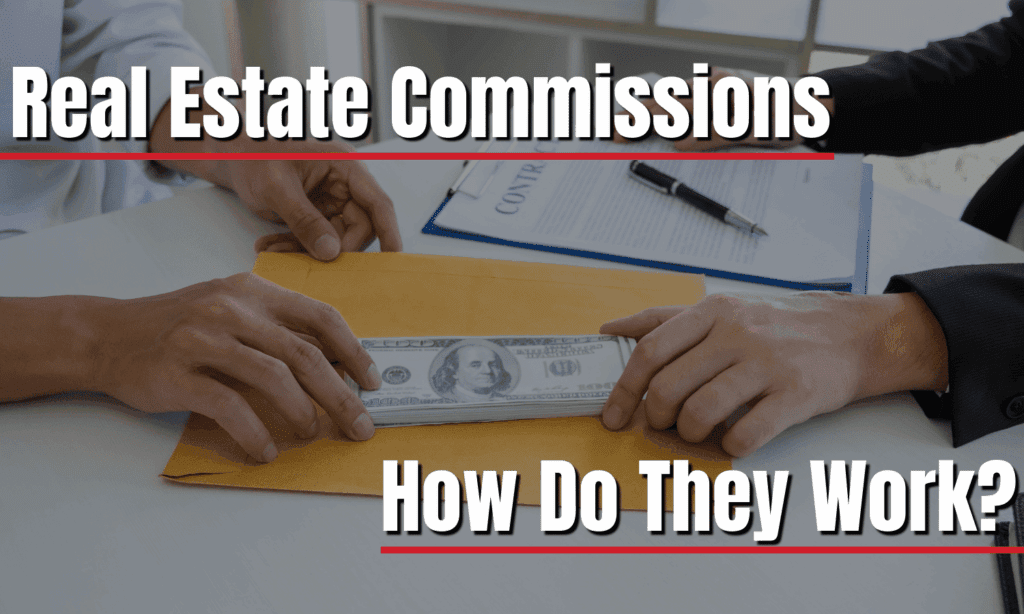Technology’s Impact on Real Estate Commissions: The Rise of 1% Broker Models
Forbes real estate commission a significant transformation. Home sellers are increasingly questioning the traditional commission structures that have dominated the market for decades. This shift in perspective is driven by a desire for more value and transparency in real estate transactions.
Amidst this changing landscape, the future of real estate commissions is taking a new shape. Technology is the catalyst, enabling brokers to operate with greater efficiency. This allows for reduced financial burdens on sellers without compromising service quality.
This article examines how technological advancements enable 1% commission real estate brokers to provide a full suite of services. It highlights the operational efficiencies gained through technology, allowing for competitive commission rates. This ensures full service at a fraction of the traditional cost.
The Traditional Commission Framework
For many years, selling a home meant allocating a substantial portion of the sale price to real estate commissions. Standard rates typically ranged from 5% to 6% of the final sale price. This percentage was traditionally split between the listing agent and the buyer’s agent.
This framework placed a significant financial burden on home sellers. It directly reduced their net proceeds from the sale. Sellers often saw tens of thousands of dollars leave their pockets, a cost structure that felt fixed and unavoidable for generations.
This historical market structure often left sellers feeling they had little choice. The belief was that a lower commission meant a compromise on service. This perception is now changing, challenging the very foundation of traditional real estate.
Technological Advancements Driving Change
The internet fundamentally information flows in real estate estate. Digital platforms provide unprecedented market transparency. Sellers and buyers now access property data and market trends with ease.
Online listing services have replaced much of the traditional legwork. These platforms showcase properties to a wider audience than ever before. This digital reach streamlines the initial marketing phase of selling a home.
Beyond listings, operational efficiency tools power modern real estate operations. Customer Relationship Management (CRM) systems manage client interactions and track progress. Data analytics provide deep market insights, guiding pricing and strategy decisions.
Electronic document management further reduces administrative overhead. It simplifies contracts, disclosures, and other necessary paperwork. This digital approach saves time and minimizes errors, enhancing the overall transaction process.
Marketing and presentation enhancements have also evolved. Virtual tours and professional photography create compelling online property showcases. Digital marketing channels, from social media to targeted email campaigns, extend property reach efficiently.
Operational Model of 1% Commission Brokers
1% commission brokers leverage technology to redefine operational efficiency. Automation plays a key role in tasks like lead processing and client onboarding. This reduces manual effort and speeds up initial interactions.
Centralized data management systems keep all client and property information organized. This ensures brokers have immediate access to necessary details. It supports a streamlined process from listing to close.
These brokers achieve expanded marketing reach through sophisticated digital advertising strategies. They utilize enhanced MLS integration to syndicate listings across multiple platforms. Targeted online campaigns ensure properties reach the most relevant buyer pools.
Client service and transaction management also benefit from technological tools. Online portals provide sellers with real-time updates on their listing’s performance. Electronic signing and secure document exchange simplify contract negotiations and closures.
CRM systems manage consistent follow-up and task management. This ensures no detail is overlooked throughout the selling process. This level of organization supports a smooth transaction for both seller and broker.
Data-driven pricing and market analysis are central to the 1% model. Brokers utilize advanced market data platforms to gain precise insights. This allows for accurate property valuation and strategic pricing decisions.
Full Service Delivery at 1% Commission
A common misconception is that a lower commission means reduced service quality. However, technology allows 1% commission brokers to defy this expectation. They provide a comprehensive suite of services, mirroring or exceeding traditional offerings.
Technology supports every facet of the selling process. From initial market analysis to closing coordination, digital tools enhance efficiency. This refutes claims that reduced service accompanies lower fees.
Core service offerings remain robust within these models. Professional photography and extensive digital marketing ensure properties are presented effectively. Negotiation expertise is paramount, ensuring sellers achieve the best possible price.

Contract management and closing coordination are handled with precision. Digital platforms streamline these complex processes. Sellers receive expert guidance through every step of their transaction.
This full-service approach, powered by technology, demonstrates a new paradigm. Sellers no longer need to choose between affordability and quality. They can have both, retaining more equity in their home.

Advantages for Home Sellers
The most immediate advantage for home sellers is financial savings. A 1% commission significantly reduces overall selling costs. This translates directly into increased equity retention, putting more money back into the seller’s pocket.
Beyond savings, sellers gain access to professional services. These services are equivalent to, or often enhanced by, technology. The efficient transaction process means less stress and faster results.
Transparency is another key benefit. Sellers have a clear understanding of all fees involved from the outset. Streamlined communication tools keep sellers informed at every stage, fostering trust and clarity.
This model offers a compelling alternative to the traditional system. Sellers receive expert representation. They also keep a larger portion of their hard-earned home equity.
The Evolving Real Estate Commission Landscape
The market is increasingly responsive to innovation, driving the future of real estate. The adoption of tech-enabled models is growing. This puts pressure on traditional brokers to offer more competitive commission structures.
The role of the agent is also transforming. Technology handles many administrative tasks. Agents can then shift their focus to strategic guidance and client advocacy. Their expertise in negotiation and market interpretation becomes even more valuable.
Consumer expectations are changing rapidly. Sellers demand value and efficiency in every transaction. There is a growing preference for digital solutions that simplify the selling process.
The unbundled buyer agent compensation is becoming clearer. This new era empowers sellers with more choice. It challenges long-held industry norms and redefines what full service means.
Grant Clayton, our founder and CEO, has often discussed how outdated commissions crush. This market shift aligns with his vision of bringing value and efficiency to homeowners. It signifies a move towards fairer and more transparent practices.
Conclusion
Technology acts as a powerful catalyst for accessible, full-service 1% commission models. It empowers brokers to deliver exceptional service while drastically reducing costs. This creates a win-win scenario for home sellers.
Home sellers benefit from substantial cost savings and professional representation. They retain more of their home equity without sacrificing quality or support. This modern approach redefines the selling experience.
The outlook for real estate transaction economics points to a sustained shift. The rise of 1% commission models, fueled by technology, is not just a trend. It’s the new standard, reshaping how homeowners sell their most valuable asset. The future favors efficiency, transparency, and value for the seller.
Frequently Asked Questions
What is a 1% commission real estate broker?
A 1% commission real estate broker uses technology and streamlined processes to offer the same full suite of services as traditional brokers, but at a significantly reduced listing commission of just 1% of the sale price. This saves sellers thousands of dollars.
How can 1% brokers offer full service at a lower cost?
Technological advancements enable greater efficiency. Tools like CRM systems, data analytics, digital marketing platforms, and automated document management reduce operational costs. This allows brokers to pass those savings directly to the seller in the form of lower commissions.
Do 1% commission brokers offer the same services as traditional brokers?
Yes, 1% commission brokers typically provide comprehensive services. These include professional photography, extensive digital marketing, expert negotiation, contract management, and closing coordination. Technology ensures these services are delivered efficiently and effectively.
What are the main advantages for home sellers using a 1% commission model?
Home sellers save thousands of dollars in commission fees, directly increasing their net proceeds from the sale. They also benefit from efficient, transparent transactions and high-quality professional representation, all powered by modern real estate technology.




